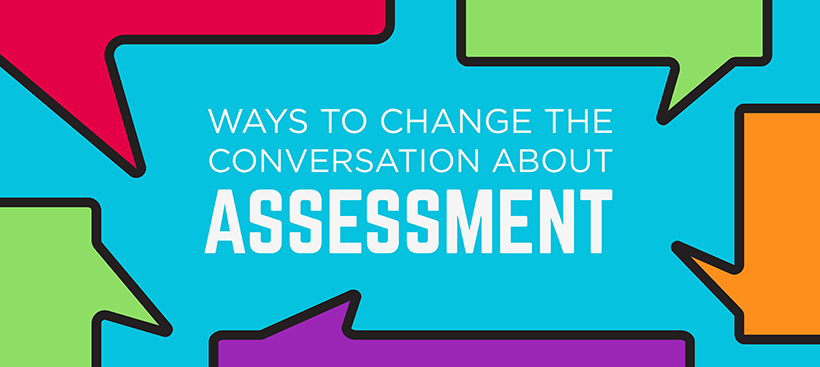From the NCTE Standing Committee on Assessment
This blog was written by Kathleen Blake Yancey, a member of the NCTE Standing Committee on Assessment.
Many teachers think of reflection as a teaching tool, a way to learn from students about what the students themselves think they are learning. In articulating that learning for others, much as Vygotsyky suggests, students explain it to themselves. Other teachers think of reflection as an assessment tool, especially in portfolios. In this case, reflection provides the student’s account of learning—which can take various forms, from an account of process to assessment of one’s work (i.e., self-assessment)—and this account provides a context for the reading of student texts demonstrating what students know and can do. And probably most teachers think of reflection in both ways, available for both teaching and assessment.
As someone long interested in reflection, I’m very impressed by some of the newer practices in reflection that I’ve learned about. Here I share two of them. The first, which I discuss below, is a use of reflection for institutional assessment: students engage in reflection as part of deciding which writing course is the best one for them. The second reflective practice, which I will cover in the next blog, is a classroom use of reflection focused on what students are learning as they learn. And in both cases, as we’ll see, students’ reflection on the past is part of their planning for the future.
BEGINNING WITH REFLECTION
We often think of reflection as a culminating activity, a practice we use once a project or an assignment is completed. But some schools, like San Jose State University (SJSU), use reflection to help students begin, in this case to begin their careers as college writers. In welcoming first-year students to campus, San Jose State invites each to become “a partner in shaping your own learning experience”:
Welcome to Writing at SJSU! As you enter SJSU, you enter a new learning community. In this community, we see you as a partner in shaping your own learning experience. Thus we ask that you explore the college writing requirements at SJSU and the courses available to you. Then we ask you to decide the best course to help you transition into this new learning community in your first year with us.
This reflective practice, which is called Directed Self Placement (DSP), positions students as learners who know something about themselves as writers; based on this knowledge, students decide which writing course is best for them, especially to help them “transition into this new learning community.” To complete this exercise, students are asked to take up three reflective tasks: reflect on who they are as a writer; learn about the optional writing courses at San Jose State; and based on both their reflection and the information about the possible courses, make a good decision about the best course for them. These tasks are represented in the five questions students respond to:
- Who are you as a writer?
- How will you use reading at SJSU?
- What will SJSU writing assignments be like?
- What are your course options as a writer?
- Which course is best for you?
Several dimensions of this reflective task are noteworthy.
- First, the task is purposeful: students are reflecting in order to make an important curricular decision.
- Second, the task, drawing on students’ prior knowledge and experience, is authentic: no one but a writer him or herself can answer the question “Who are you as a writer?.”
- Third, the task authorizes students to make this curricular decision: SJSU thus expresses confidence in a student’s ability to make a good decision.
- Fourth and not least, in connecting prior experiences with the new, the task validates the student’s earlier learning and uses it to help create a path into a new community.
This reflective task is, of course, an institutional one designed for placement assessment. But it’s one that we can adapt for classroom use, especially as we begin a new year or term or course with students. Welcoming them into our classroom community, we can invite students to reflect upon who they are as writers and how they would like to develop, especially given the new writing and reading tasks they will take up in our community.
In my next blog post, I’ll consider the use of reflection—inviting students in the classroom to reflect as they are engaged in learning.
NCTE Standing Committee on Literacy Assessment
CHAIR, Peggy O’Neill (Loyola University, Baltimore, MD)
Josh Flores (Birmingham, AL)
Bobbie Kabuto (Queens College, Flushing, NY)
Becky McCraw (Goucher Elementary School, Gaffney, SC)
Kathryn Mitchell Pierce (Saint Louis University, MO)
Elisa Waingort (Calgary, Alberta, Canada)
Kathleen Blake Yancey (Florida State University, Tallahassee)

